Hong Kong residents being forced to live on top of each other in ‘coffin homes’
THE high cost of living in Hong Kong is taking a severe toll on some residents, who are forced to live in “coffin homes”.
LI SUET-WEN’S dream home would have a bedroom and living room where her two children could play and study.
The reality is a one-room “shoebox” cubicle, one of five, partitioned out of a small apartment in an ageing walk-up in a working class Hong Kong neighbourhood.
Into the 120-square-foot room are crammed a bunk bed, small couch, fridge, washing machine and tiny table. On one side of the door is a combined toilet and shower stall, on the other a narrow counter with a hotplate and sink.
Clothes drying overhead dim light from a bare fluorescent tube. It feels like a storage unit, not a home.
Li’s six-year-old son and eight-year-old daughter often ask, “Why do we always have to live in such small flats? Why can’t we live in a bigger place?” Li said.
“I say it’s because mummy doesn’t have any money,” said Li, a single mum whose HK$4500 ($785) a month in rent and utilities eats up almost half the HK$10,000 ($1740) she earns at a bakery decorating cakes.
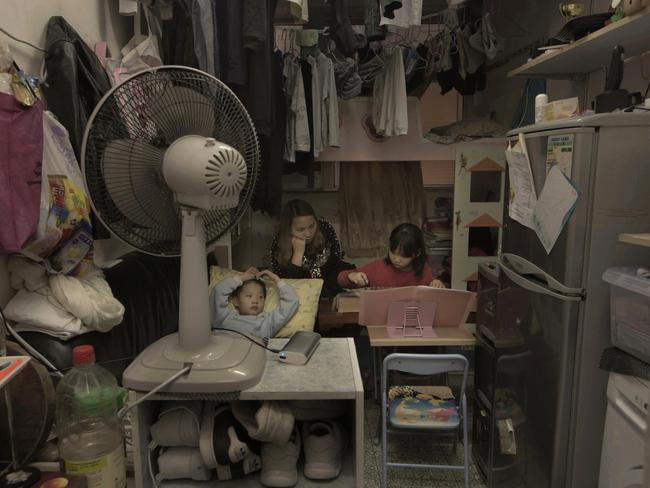
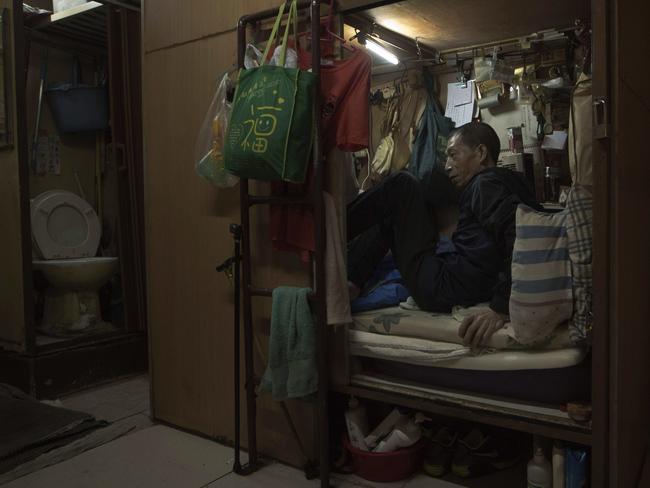
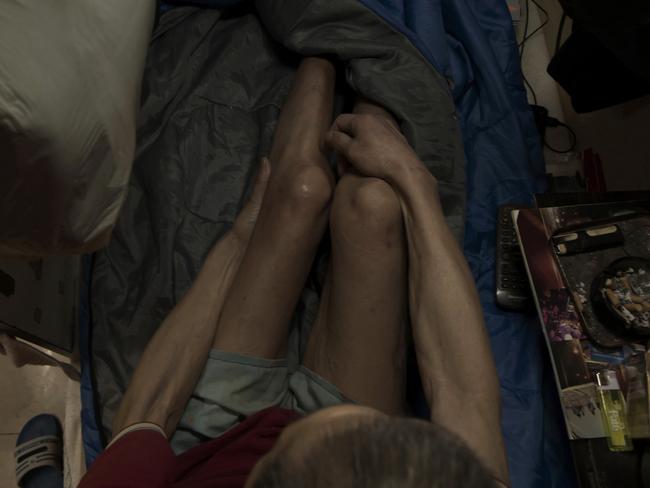
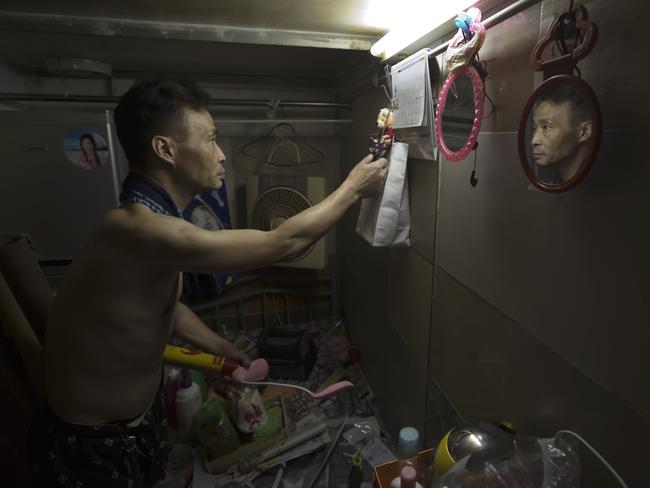
Housing costs are among this wealthy Asian financial centre’s biggest problems. Some 200,000 of Hong Kong’s 7.3 million residents live in “subdivided units”. That’s up 18 per cent from four years ago and includes 35,500 children aged 15 and under, government figures show.
The figure doesn’t include many thousands more living in other “inadequate housing” such as rooftop shacks, metal cages resembling rabbit hutches and “coffin homes” made of stacked wooden bunks.
It’s a universe away from the lifestyles enjoyed by the rich living in lavish mountaintop mansions and luxury penthouses, or even those with middle-class accommodation in this former British colony.
RELATED: Australia’s housing crisis
Hong Kong regularly tops global property price surveys. Rents and home prices have steadily risen and are now at or near all-time highs.
The US-based consultancy Demographia has ranked it the world’s least affordable housing market for seven straight years, beating Sydney, Vancouver and 400 other cities. Median house prices are 19 times the median income. Beijing-backed Carrie Lam, who was chosen in March to be Hong Kong’s next chief executive, has vowed to tackle the housing crisis she is inheriting from her predecessor Leung Chun-ying.
Ms Lam says that after she takes office in July she will help middle-class families afford starter homes and expand the amount of land the government makes available for development.

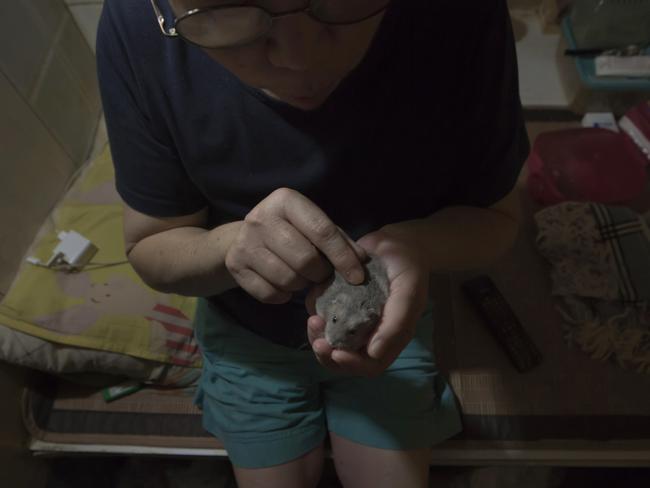

“As everyone knows, for some time housing has been a troubling problem for Hong Kong,” she said in her victory speech. “I have pledged to assist Hong Kongers to attain home ownership and improve their living conditions. To do so we need more usable land. The key is to reach a consensus on how to increase the supply.”
Prices have soared despite multiple rounds of government cooling measures, as money floods in from mainland China.
Widening inequality helped drive mass pro-democracy protests in 2014. Young people despair of ever owning homes of their own. They lack space even to have sex, one activist politician said last fall, using a coarse Cantonese slang term that caused a stir.
“If we cannot solve the housing problem, there will be more social problems,” said Sze Lai-shan, an organiser with social welfare group Society for Community Organisation. “Social tensions will increase and people are (going to be) getting more annoyed with the government’s policies.”

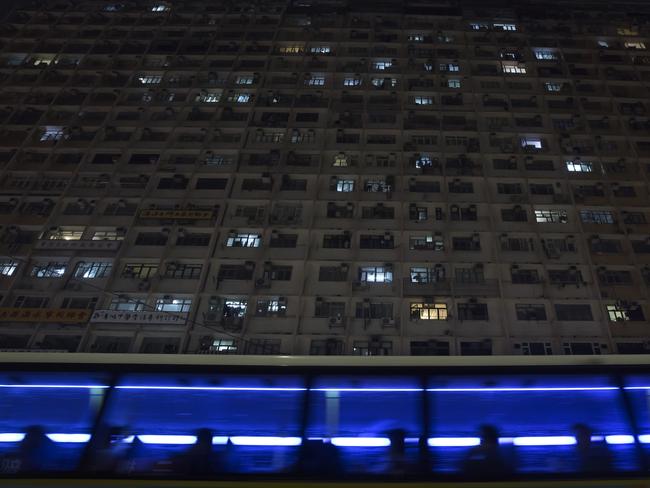
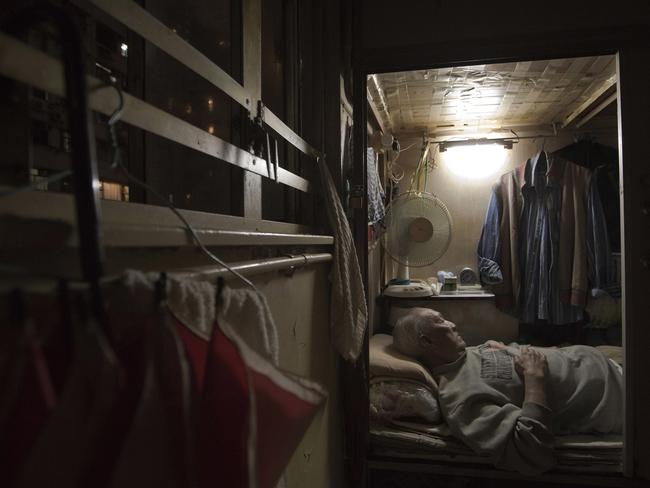
Resident Li says her children bicker non-stop.
“They fight over this and fight over that. If there’s a day off (from school), the two of them will argue,” she said. “The bigger they get, the more crowded it gets. Sometimes there’s not even any space to step,” she said. “They don’t even have space to do their homework.”
Public housing is the best hope for most living on modest incomes. High-rise public housing estates house about 30 per cent of Hong Kong’s seven million people. If homes bought with government subsidies are included, the number rises to nearly half.
RELATED: Will Australia’s housing bubble pop in 2017?
Li applied two years ago, but with 282,300 people on the waiting list the average wait is 4.7 years.
Wong Tat-ming, 63, has occupied an even smaller “coffin home” for four years. He pays HK$2400 ($420) a month for a 1m x 6m compartment crammed with his meagre possessions, including a sleeping bag, small colour TV and electric fan.
His bunk sits beside grimy toilets and a single sink shared by two dozen residents, including a few single women.
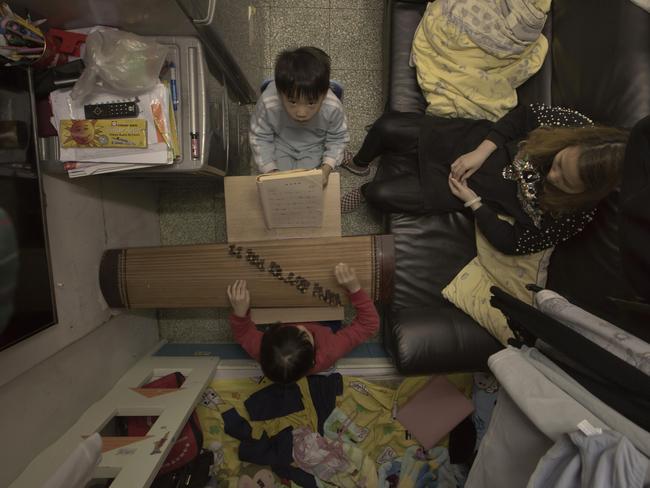
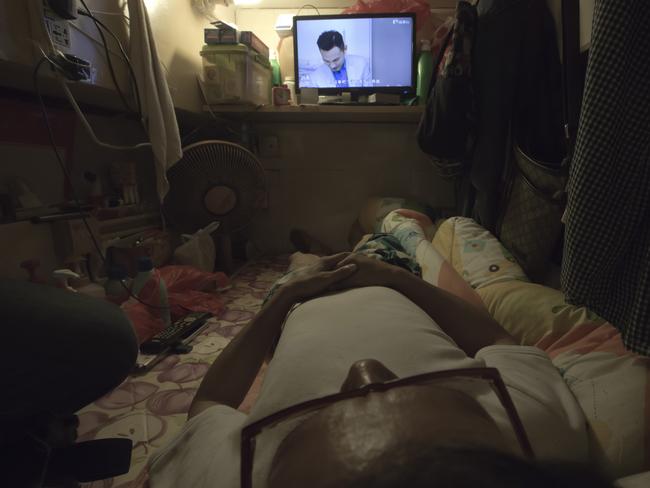


On a per square foot basis, “it’s not cheap here either,” Wong jokes. “Would you say it’s more expensive than living in a mansion?” Leg pain from sclerosis forced Wong to stop driving a taxi 10 years ago. He gets by on about HK $5300 ($925) a month from welfare.
Wong is sceptical Lam can help.
“So she says she’s going to take care of these problems, but that will take at least seven to eight years,” he said.
Chan Geng-kau, who works here and there as a janitor, and his wife worry about being forced out of their hut in one of the city’s “slums in the sky” atop a terrace of a Kowloon tenement bristling with TV antennas and crisscrossed by coverhead wires.
The government plans to demolish the illegal concrete and corrugated metal huts. “If they come to clear us out, my income isn’t high, I don’t earn very much and the apartments out there are very expensive so I can’t afford it,” said Chan, 58. With his unstable income, he’s barely able to pay his HK$2000 ($350) a month rent. “If I pay those rents, I can’t afford to eat.”



